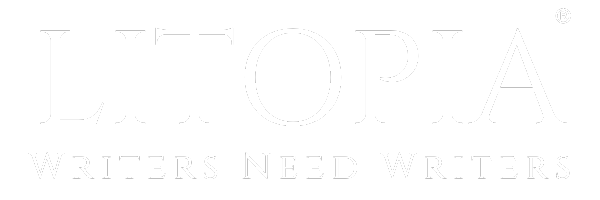Paul Whybrow
Full Member
Follow along with the video below to see how to install our site as a web app on your home screen.
Note: This feature may not be available in some browsers.
Café Life is the Colony's main hangout, watering hole and meeting point.
This is a place where you'll meet and make writing friends, and indulge in stratospherically-elevated wit or barometrically low humour.
Some Colonists pop in religiously every day before or after work. Others we see here less regularly, but all are equally welcome. Two important grounds rules…
We now allow political discussion, but strongly suggest it takes place in the Steam Room, which is a private sub-forum within Café Life. It’s only accessible to Full Members.
You can dismiss this notice by clicking the "x" box
On this question, I've released my paperback with Helvetica as the font for all body text. Most of the advice I've written says something very much like "You can get away with a modern font in books designed for Europe, but America is not ready for serif-free fonts yet," (I'm paraphrasing).
So, going with Helv was a deliberate choice. It's already available as an option on Kindle, but I know Windows has dropped it in favour of Arial, and I don't think Macs support it natively (Or do they?) For me, Helvetica is always my go-to typeface. I have a lot of love for it! Maybe it's not what "proper" publishers would choose, but I'm a designer by trade, and I'll use it for as long as I have the option.
Personally it's something I really wanted to do, but I'll be curious to see if anybody actually complains at some point.As long as you're happy with the style, does it really matter? Especially if you're not taking the traditional publishing route.
I think if I saw sans-serif outside a computer screen, my delicate sensibilities — nay even my sanity — might be shattered.On this question, I've released my paperback with Helvetica as the font for all body text. Most of the advice I've written says something very much like "You can get away with a modern font in books designed for Europe, but America is not ready for serif-free fonts yet," (I'm paraphrasing).
So, going with Helv was a deliberate choice. It's already available as an option on Kindle, but I know Windows has dropped it in favour of Arial, and I don't think Macs support it natively (Or do they?) For me, Helvetica is always my go-to typeface. I have a lot of love for it! Maybe it's not what "proper" publishers would choose, but I'm a designer by trade, and I'll use it for as long as I have the option.
Agreed. "Bitty" is exactly what I'd call it!I like Calibri, Verdana and Garamond better than the eternal Times New Roman. Work in those, change fonts if there is a submission preference for TNR. Usually there is. I think it looks 'bitty.'
Too late.I think if I saw sans-serif outside a computer screen, my delicate sensibilities — nay even my sanity — might be shattered.
Fair point. Mm. Delicious fish.Too late.
It's not the font choice that is the issue here, it's the kerning (space between the letters) Basically that's a poor graphic designer job, not a poor font choice, the font actually is quite appropriate in my mind for candles, just needed spaced out better.
